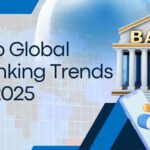Introduction
In a positive update for India’s financial ecosystem, Moody’s Ratings has reaffirmed the resilience of India’s domestic economic conditions, emphasizing strong macroeconomic fundamentals and a well-capitalized banking sector. The credit rating agency anticipates that non-performing loans (NPLs) within the Indian banking system will remain low, in the range of 2–3% over the next 12 months.
This encouraging projection signals confidence in India’s financial institutions and underlines the country’s ability to sustain economic growth amidst global uncertainties.
🏦 Moody’s Assessment: Key Highlights
📊 1. Stable Credit Environment
Moody’s notes that the current macroeconomic environment in India is stable, driven by:
- Consistent GDP growth (~6.3% projected for FY2025)
- Robust domestic consumption
- Sound monetary and fiscal policy management
This stability supports the financial system, ensuring healthy loan repayment rates and improved credit discipline.
🏛️ 2. Resilient Banking Sector
Moody’s applauds the Indian banking sector for:
- Strong capital buffers (especially post-COVID recapitalization)
- Improved asset quality, thanks to recovery efforts and digital credit monitoring
- Effective regulatory oversight from the Reserve Bank of India (RBI)
As a result, Indian banks are better equipped to absorb shocks, with public and private sector banks showing resilience across key indicators.
💼 3. Low NPL Outlook
- The overall NPL ratio is expected to stay within 2-3%, a significant improvement from earlier years when stressed assets crossed 10%.
- Lower defaults indicate greater borrower discipline, aided by stricter underwriting norms and better monitoring tools like AI-based risk models.
📈 Why This Matters for India’s Economy
💹 Boosts Investor Confidence
A strong banking system enhances foreign and domestic investor confidence, paving the way for:
- Increased FDI inflows
- Enhanced corporate borrowing capacity
- Lower borrowing costs for startups and MSMEs
🔍 Signals Fiscal Responsibility
This update validates India’s efforts in:
- Maintaining fiscal prudence
- Balancing growth with inflation control
- Encouraging sustainable lending practices
🏗️ Enables Infrastructure Financing
Resilient banks are better positioned to support:
- Large infrastructure projects
- Renewable energy initiatives
- Affordable housing programs
This is especially important as India gears up for Vision 2047, which targets inclusive and innovation-led growth.
🛠️ What’s Behind India’s Improved NPL Numbers?
Several structural reforms have contributed to this progress:
| Reform/Initiative | Impact on Banking Sector |
|---|---|
| Insolvency and Bankruptcy Code (IBC) | Faster resolution of bad loans |
| Public Sector Bank Mergers | Better operational efficiency |
| Digital Loan Tracking (e.g., CIBIL, Aadhar-linking) | Improved borrower profiling |
| ECLGS & Credit Guarantees | Helped MSMEs avoid default |
| Asset Reconstruction Companies (ARCs) | Offloaded stressed assets |
🌍 How India Compares Globally
| Country | NPL Ratio (2025 est.) |
|---|---|
| India | 2–3% |
| China | ~4.5% |
| Brazil | ~3.9% |
| U.S. | ~1.2% |
| Italy | ~5.1% |
While India isn’t at U.S. levels yet, its trajectory is highly positive, especially given its large informal sector and credit diversity.
🔮 Outlook: What Lies Ahead?
Moody’s believes India’s economy is set to maintain its upward momentum with a few conditions:
- Continued financial sector reforms
- Vigilant inflation management
- Investment in infrastructure and rural development
With elections behind and policy clarity in place, the next few quarters are crucial for capital expenditure (CapEx) revival and employment generation.
🧠 Conclusion
Moody’s affirmation of India’s economic resilience sends a strong message to global markets: India is a stable, growth-oriented, and financially disciplined economy. For businesses, investors, and consumers, this means:
- Greater access to credit
- More predictable monetary policy
- Long-term investment opportunities
As India marches forward, its strong financial backbone could prove to be the differentiator that powers sustainable and inclusive growth.















